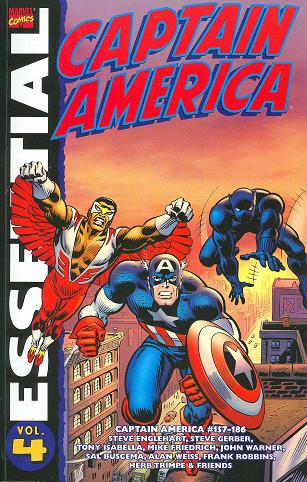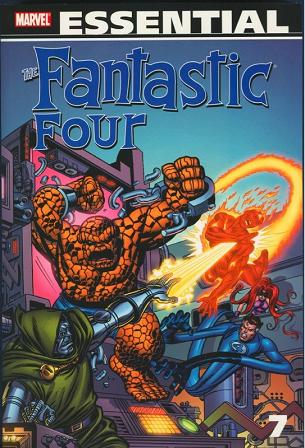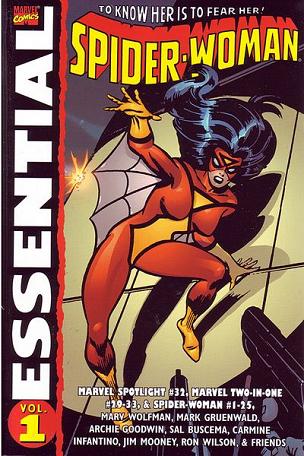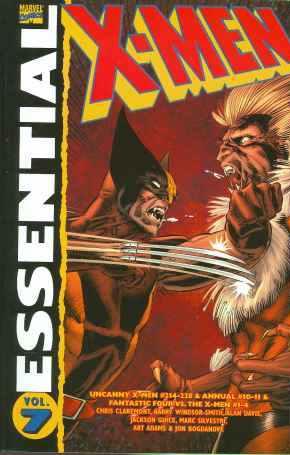So I’ve spent the last fifty days reading and reviewing fifty Marvel Essential collections, simply because I could. Today, let’s look back at what I’ve learned.
First up is the most obvious lesson: not all Essentials are created equal. As should be guessed from the existence of Essential Godzilla, Marvel will slap an Essential collection together for every character or title likely to shift books. There’s a lot of dross out there, mediocre titles not deserving to have been rescued from oblivion and weak volumes of long running titles you can skip easily.
Second, because the Essentials are relentlessly chronological in nature, mechanically collecting twenty to thirty or so issues together, there can be a lot of bad mixed in with the good in each volume. A good example is Essential Dr Strange Vol. 01, which features the complete Lee-Ditko run, which is absolutely brilliant, plus another dozen issues or so featuring lesser talents that are so inferior that any pleasure in reading them is gone.
Third, reading so many volumes in such a short time, in a roughly chronological order, it drove home to me how much the socalled Marvel Housestyle has changed over the years. There are four distinctive periods I could see. There’s the Early Silver Age, when Lee and Kirby and Ditko first start to build the Marvel revolution, with relatively simple one issue stories, lots of commie villains and little to no crosstitle continuity. This morphs into the Late Silver Age, with Lee still involved in the day to day running of Marvel and writing several series, but with younger writers like Roy Thomas and Steve Gerber onboard as well. More intricate stories, more crosstitle continuity, an expanding universe and heroes who sometimes question their calling. In the Bronze Age more relevant social issues of the day take their place, while the always present soap opera becomes as important as the superheroics. After that, with the coming of Claremont, you get the obsessive layering of subplots and a much darker, pessimistic take on superheroics, especially in the X-Men volumes of course. It’s subtle and there are no definitive boundaries between those periods, but each volume here I could assign to a period easily.
Fourth, reading this has been fun, has rekindled my interest in superhero comics, but also reminded me of how much I miss proper superhero comics. I miss the Marvel Universe, the way in which series would interact without being part of an universe wide crossover, the little details and nudges that made clear that all these stories did take place in the same universe.
Anyway, below is the complete list of reviews. Enjoy.
- 01: Essential Dr Strange Vol. 01
- 02: Essential Man-Thing Vol. 01
- 03: Essential Marvel Team-up Vol. 01
- 04: Essential Incredible Hulk Vol. 01
- 05: Essential Fantastic Four vol 01
- 06: Essential Godzilla Vol. 01
- 07: Essential Captain America Vol. 01
- 08: Essential Iron Man Vol. 01
- 09: Essential Conan
- 10: Essential Spider-Man Vol. 01
- 11: Essential Spider-Man Vol. 02
- 12: Essential Spider-Man Vol. 03
- 13: Essential Official Handbook of the Marvel Universe Vol. 01
- 14: Essential Marvel Two-in-One Vol. 01
- 15: Essential X-Men Vol. 01
- 16: Essential Avengers Vol. 01
- 17: Essential Fantastic Four Vol. 02
- 18: Essential Ms Marvel Vol. 01
- 19: Captain America Vol. 02
- 20: Essential OHOTMU Deluxe Edition Vol. 01
- 21: Essential Uncanny X-men Vol. 01
- 22: Essential Power Man and Iron Fist Vol. 01
- 23: Essential Silver Surfer Vol. 01
- 24: Essential Ghost Rider Vol. 01
- 25: Essential X-Men Vol. 02
- 26: Essential Avengers Vol. 02
- 27: Fantastic Four Vol. 03
- 28: Essential Iron Man Vol. 03
- 29: Essential Spider-Man Vol. 04
- 30: Essential Marvel Two-in-One Vol. 02
- 31: Essential X-Men Vol. 03
- 32: Essential Avengers Vol. 04
- 33: Essential Defenders Vol. 02
- 34: Essential Fantastic Four Vol. 04
- 35: Essential Ghost Rider Vol. 02
- 36: Essential X-Men Vol. 04
- 37: Essential Man-Thing Vol. 02
- 38: Essential Avengers Vol. 05
- 39: Essential Howard the Duck Vol. 01
- 40: Essential Captain America Vol. 03
- 41: Essential X-Men Vol. 06
- 42: Essential Fantastic Four Vol. 06
- 43: Essential Doctor Strange Vol. 03
- 44: Essential Spider-Man Vol. 06
- 45: Essential Avengers Vol. 06
- 46: Essential Silver Surfer Vol. 02
- 47: Essential X-Men Vol. 07
- 48: Essential Spider-Woman Vol. 01
- 49: Essential Fantastic Four Vol. 07
- 50: Essential Captain America Vol. 04



